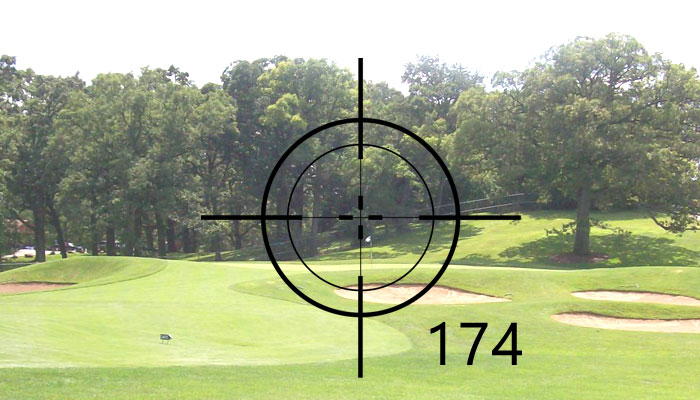 Golf club distance is a function of the combination of speed, swing path and angle of attack during the golf swing. Golf club distances are impacted by clubhead speed and ball speed, which are two different variables.
Clubhead speed is how fast the club is traveling when it reaches the ball. Ball speed is how fast the ball is traveling just after impact. However, all of that would be worthless if you don’t have sweet spot contact.
As a general rule, 90% of golf shots are left short of the pin, so one of the best ways to get the ball to the hole and lower your score is to know your golf club distances. Understanding on average, how far each club in your bag carries and rolls after impact can make a direct impact on your handicap.
Golf club distance is a function of the combination of speed, swing path and angle of attack during the golf swing. Golf club distances are impacted by clubhead speed and ball speed, which are two different variables.
Clubhead speed is how fast the club is traveling when it reaches the ball. Ball speed is how fast the ball is traveling just after impact. However, all of that would be worthless if you don’t have sweet spot contact.
As a general rule, 90% of golf shots are left short of the pin, so one of the best ways to get the ball to the hole and lower your score is to know your golf club distances. Understanding on average, how far each club in your bag carries and rolls after impact can make a direct impact on your handicap.
Click here to download a Golf Club Distance Chart (PDF)
How far can you hit a 7-iron? How far do you usually hit a 7-iron? These are two different questions that most amateur golfers often consider similar when choosing a club on the golf course. “I hit my 7-iron 200 yards last week at Cog Hill. So it should be the perfect club for this same distance at Harborside.”Why is it important to know your golf club distances?
“The statistics would say 150 yards is the key distance for amateurs to practice, that and further is actually a bigger separator between professionals and amateurs” said PGA Tour instructor Jake Thurm. “That being said, there is a difference between carry distance and total distance. Amateurs typically play total distance (carry + roll) on their best shots as their standard carry.” In addition to understanding the difference between carry and total distance, another reason for knowing how far each club goes is to properly manage the gaps in distance between your clubs. For example, if you have a 20-30 yard gap between your 4-iron and your 3-wood, you’ll be in deep trouble if a shot requires a distance in the large gap.What makes the golf ball fly farther?
What are biggest factors in determining how far a ball will fly? Swing speed, impact point on the face, clubhead design, shaft? According to PGA Professional and golf club designer Mike Tait, golf ball distance is primarily determined by what he calls swing speed correctly applied. “By that I mean, the combination of speed, swing path and angle of attack” said Tait. “All of that would be worthless if you don’t have sweet spot contact though. In short, swing speed correctly applied.” These factors come together in data collected by TrackMan where a golfer with a driver swing speed of 90 mph hitting with an downward attack angle of minus 2.5 degrees can produce a golf shot that generates about 3,017 rpm of spin and 203 yards of carry distance. If the attack angle is 0 degrees (meaning the club is on a flat path through the ball) and the swing speed stays at 90 mph, the spin rate decreases to 2,786 rpm and carry distance increases by 6 yards to 209. If the player hits up on the ball at an attack angle of plus 2 degrees, the spin decreases to 2,562 and the carry distance increases to 214, an 11-yard increase from the minus 2.5 degree attack angle.How golf clubs affect distance
Shaft length can have a significant impact, providing greater clubhead speed and therefore distance. The current limit on club length is 48 inches, although most use clubs that are 46 inches or less. Increasing driver length from 46 inches to 48 inches could be expected to provide an increase in driving distance of between 4 and 5 yards. Over the last four decades, the lofts for irons have decreased on average by around 4°. For example, the loft as a 6-iron of 1970 is similar to today’s 7-iron.Download a printable Golf Club Distance Chart (PDF)
The decrease in loft and the increase in shaft length both contribute significantly to increased hitting distances for these clubs as compared to past irons of the same number. Today’s fairway woods have volumes in the 160cc to 180cc range, which is similar in size to drivers from the 1990s. With the larger volume also came increased distances.How golf balls affect distance
The performance of golf balls has changed significantly over the last 25 years, with many of those changes contributing directly to hitting distance increases. The use of multi-layer, solid-core balls has made a significant impact in how golf balls affect distance. According to the 2020 Distance Insights Report, multi-layer, solid-core balls often spin considerably less than woundcore balls at typical driver impact angles. This is an important factor for driver shot distance because decreases in spin can directly contribute to increases in distance. A comparison between the modern, solid-core golf ball and the old wound-core golf ball suggests that the new technology has improved aerodynamics and helped optimize for a lower spin rate. With an impact swing speed typical of elite male golfers, at a spin rate of 3000 rpm, the aerodynamic improvement of a modern solid-core ball was calculated to be worth approximately ten yards over a traditional wound-core ball.How golf course conditions affect distance
The condition of the playing surfaces (especially the firmness and height of cut of the turf), the topography of the hole (especially uphill/downhill), the nature and location of other potential obstacles and terrain features (such as bunkers), and environmental conditions (temperature, elevation, humidity, etc.) can all affect hitting distance. The landing conditions of the drive are also a contributor to distance. On the fairway, testing indicates that the bounce and roll of tee shots is most strongly influenced by the impact angle, with a steeper impact angle having shorter bounce and roll. Impact spin and impact speed are also significant factors.How golfers affect hitting distances
Today’s professionals are often identified as being more athletic than in previous generations and as having a strong focus on strength and flexibility training, overall health and fitness. Among other things, this athleticism can allow the golfer to generate more clubhead speed, which is an important factor in determining the overall distance of a golf shot. Measurements of clubhead speed at World Long Driving competitions found that the average clubhead speed for male competitors was 145 116 miles per hour, with a corresponding ball speeds of 214 miles per hour. The longest hitter on the PGA Tour for 2019 was Cameron Champ, who had an average club speed of 128 mph. According to TrackMan, the average male golfer has a clubhead speed of 93 mph and generates 215 yds off the tee with their driver. Various golfer physical attributes – such as height, weight, strength, flexibility and endurance – also have the potential to affect hitting distances over time as the athletic capabilities of a group of golfers improve.Studies have also found that both clubhead speed and average driving distance are negatively correlated with the age of golfers. On the PGA TOUR there is a significant relationship between driving distance and age. On average, driving distance decreases by 0.49 yards for every year in age on the PGA TOUR.
Using Launch Monitors to Increase Distance and Accuracy
Launch monitors have provided golfers and their instructors to ability to measure and understand how changes in swing technique or equipment influence ball launch and shot outcome. As well as providing accurate, objective feedback about a shot or change in equipment, launch monitors supply data that can assist in understanding of ball striking and ball flight at all levels of playing ability. The use of launch monitors can help a player achieve increased distance through the optimization of equipment and launch conditions. Until recently, launch monitors required a significant investment – anywhere from $500 to $20,000.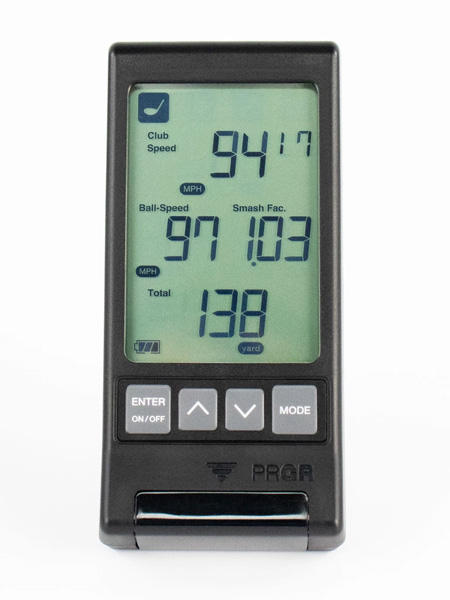
PRGR Launch Monitor
How to Improve Golf Swing Speed and Distance
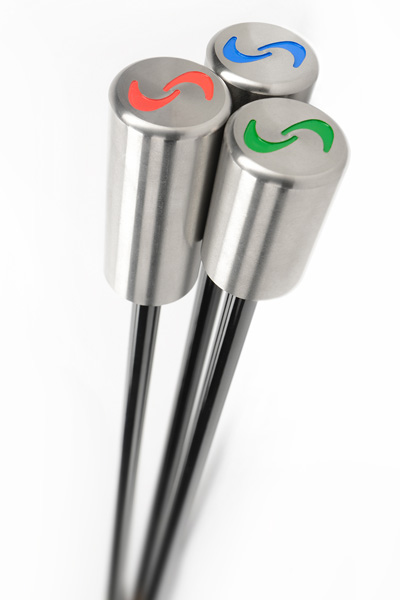
SuperSpeed Golf
How far can Tiger Woods hit a 7 iron?
Tiger Woods is one of the most successful golfers of all time, and he is known for his power and accuracy off the tee. So, how far does Tiger Woods hit a 7 iron? While Tiger’s exact distances are not public knowledge, we can make some estimates based on data from golf club manufacturers. Most golf clubs are designed to have a maximum distance of between 200 and 210 yards, and Tiger is known to be able to hit a golf ball further than the average golfer. Based on these factors, it’s safe to say that Tiger Woods can hit a 7 iron somewhere in the range of 210 yards.How far can Rory McIlroy hit a driver?
Rory McIlroy holds the world record for the longest drive in official competition, hitting his tee shot at the 2018 Adidas Golf Shootout an incredible 430 yards. While McIlroy’s drive is an extreme example, it does illustrate the potential distance that can be achieved with a golf club.What are the average distances for each golf club?
Here are average distances for each golf club as provided by Trackman for male Tour players, scratch golfers and 14-handicapers.| PGA Tour | Scratch | 14-Handicap | |
|---|---|---|---|
| Driver | 275 | 259 | 215 |
| 3 Wood | 243 | 228 | 190 |
| 5 Wood | 230 | 216 | 180 |
| Hybrid | 225 | 211 | 176 |
| 3 Iron | 212 | 199 | 166 |
| 4 Iron | 203 | 190 | 159 |
| 5 Iron | 194 | 182 | 152 |
| 6 Iron | 183 | 172 | 143 |
| 7 Iron | 172 | 161 | 134 |
| 8 Iron | 160 | 150 | 125 |
| 9 Iron | 148 | 139 | 116 |
| PW | 136 | 128 | 106 |








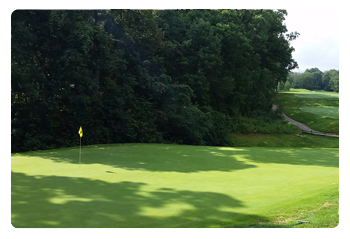 Find a Golf Course
Find a Golf Course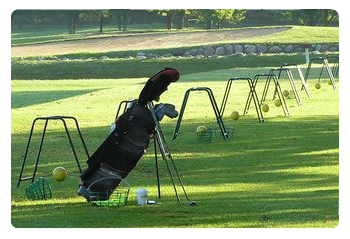 Find a Driving Range
Find a Driving Range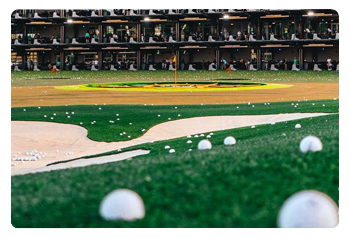 Find a Topgolf
Find a Topgolf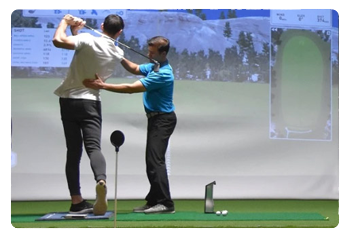 Find a Golf Instructor
Find a Golf Instructor